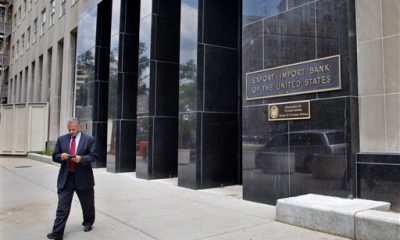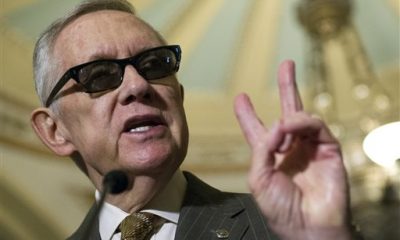Business
Trade Gap in U.S. Swells to Six-Year High as Imports Surge


A container ship is guided by tugboats as it arrives at the Port of Oakland to be unloaded Thursday, Feb. 12, 2015, in Oakland, Calif. (AP Photo/Ben Margot)
(Bloomberg) – The U.S. trade deficit widened in March to the highest level in more than six years, fueled by a record surge in imports as commercial activity resumed at West Coast ports following a resolution to labor disputes.
The gap increased 43.1 percent, the biggest jump in 18 years, to $51.4 billion, the largest since October 2008, the Commerce Department reported Tuesday in Washington. The shortfall exceeded the highest estimate of 70 economists surveyed by Bloomberg. Purchases of foreign-produced foods, capital goods and consumer products all set records, while demand for petroleum dropped.
Container ships streamed into West Coast harbors in March after port operators and dockworkers negotiated a new contract, allowing the flow of imported and exported goods to resume. At the same time, steady employment gains, a nascent pickup in wage growth and a stronger dollar may also help fuel domestic demand for foreign goods, which will keep the deficit wide.
“The ending of the port strike seemed to really only have a material effect on imports, not on exports,” said Michael Feroli, chief U.S. economist at JP Morgan Securities LLC in New York and the second-best forecaster of the trade balance over the past two years, according to data compiled by Bloomberg. “When we smooth through the data, it looks like the trend in imports is moving higher whereas the trend in exports looks kind of soft.”













































